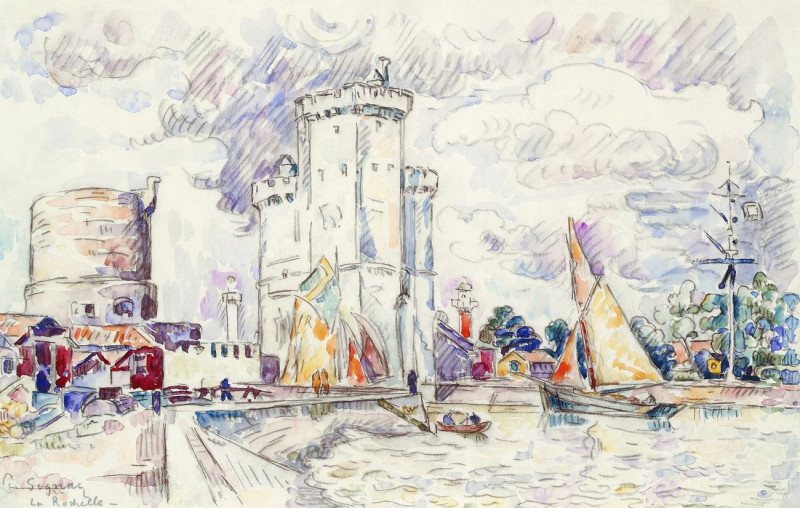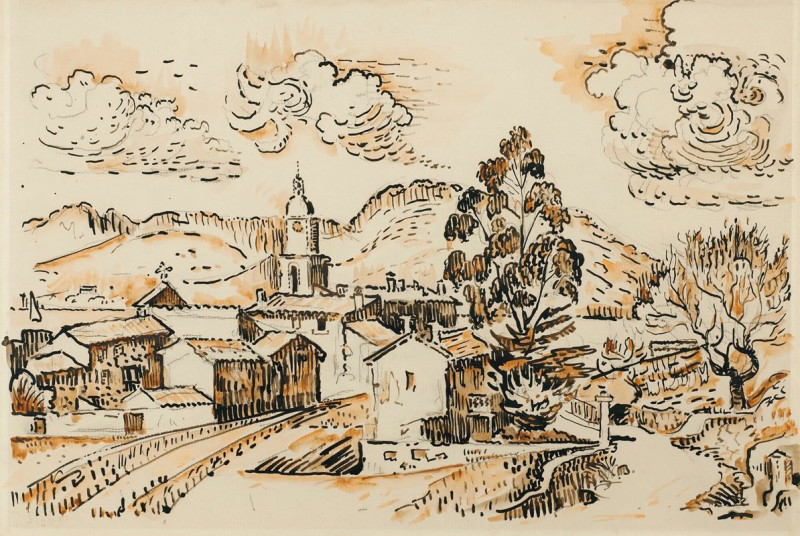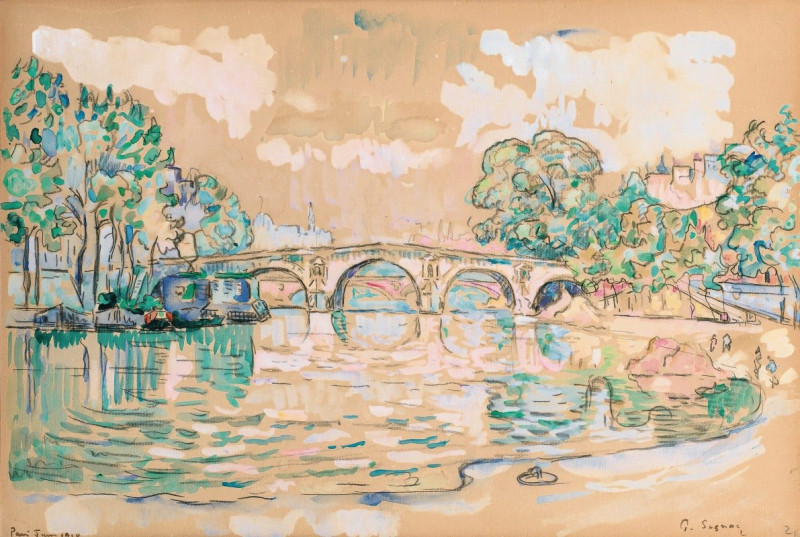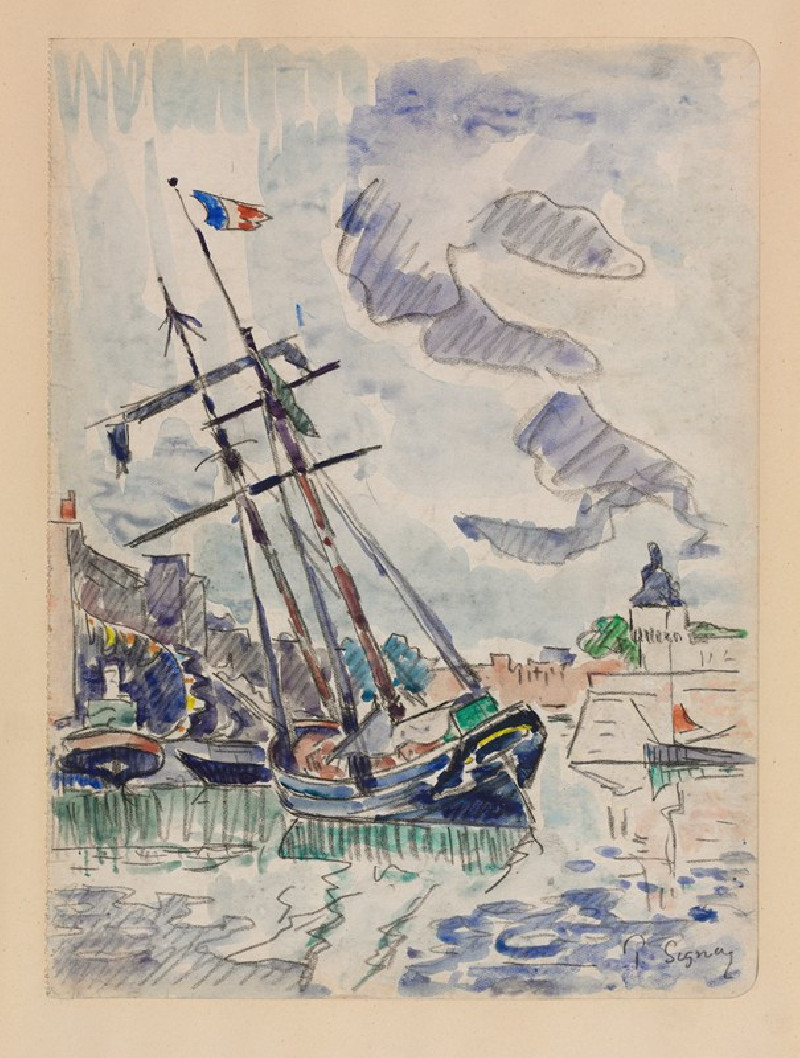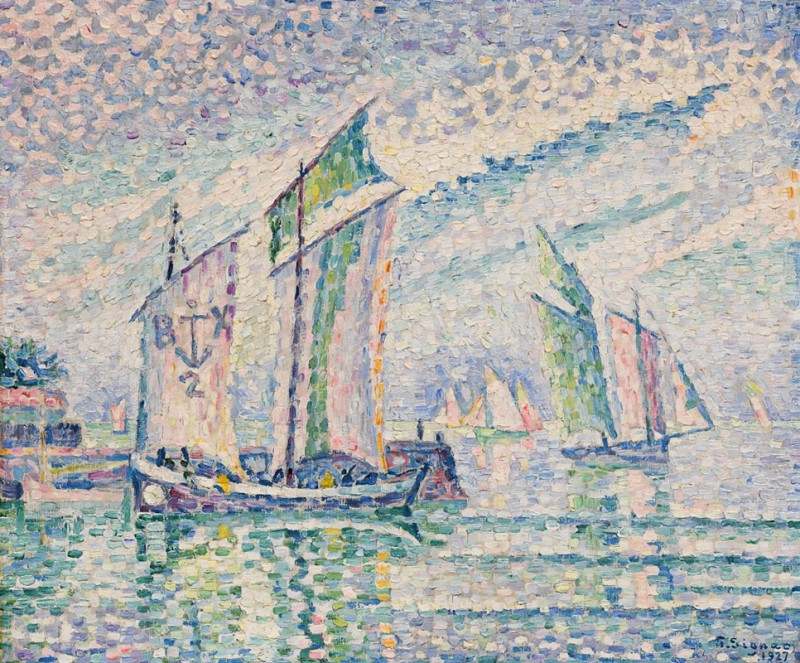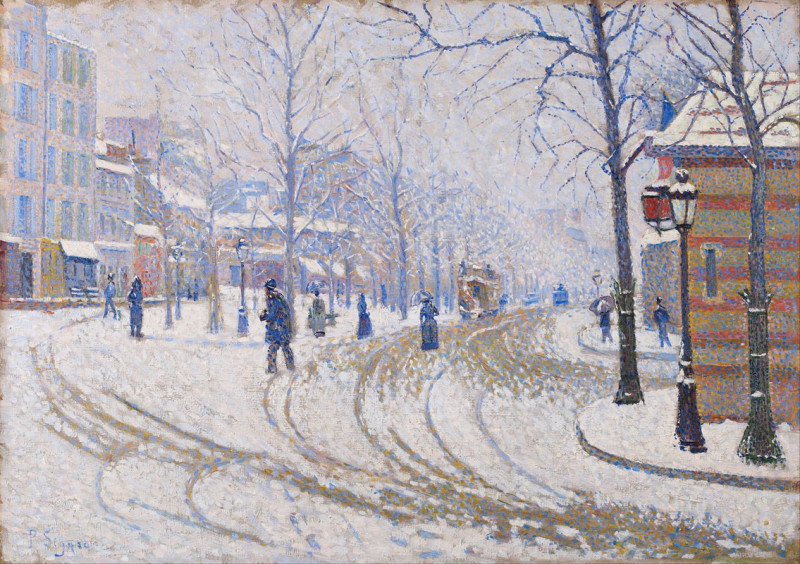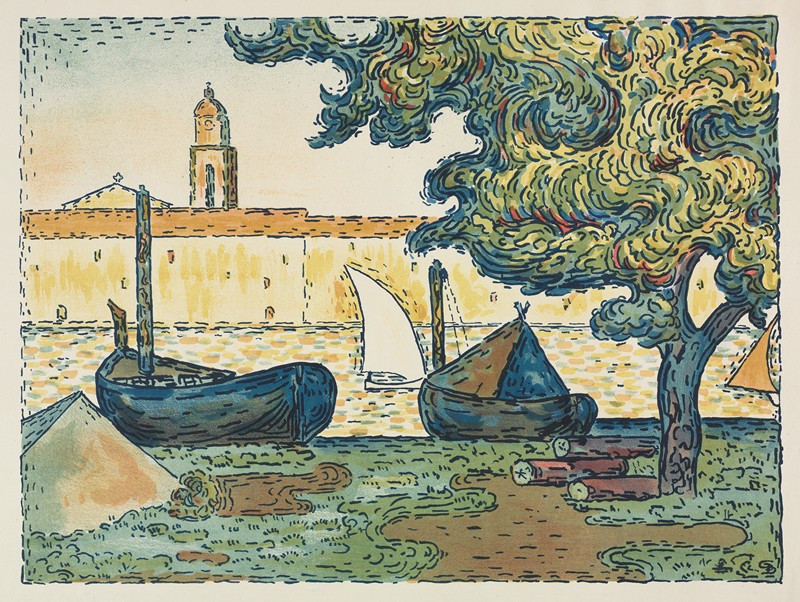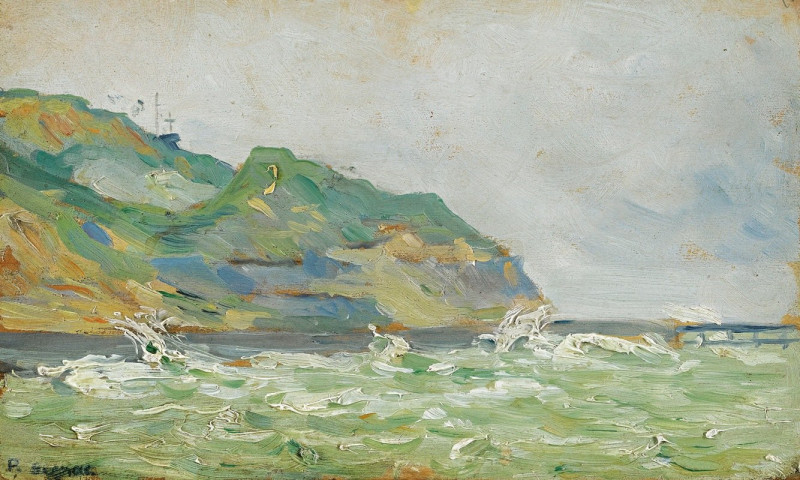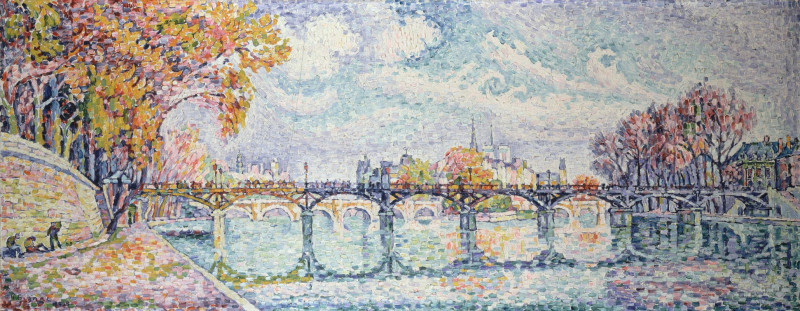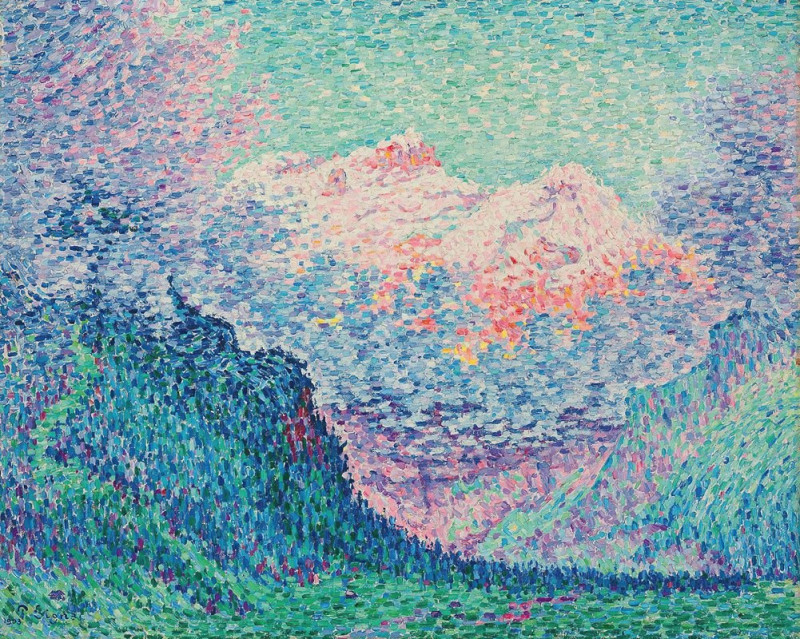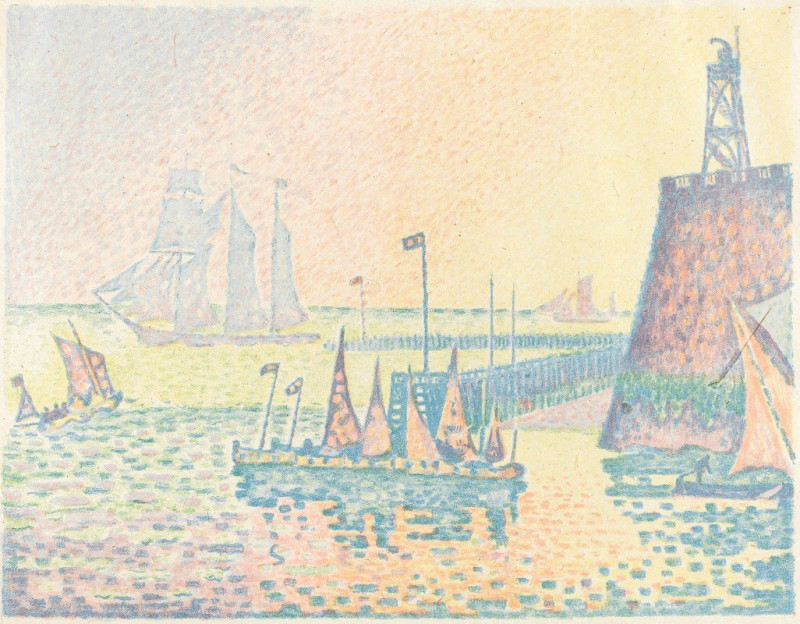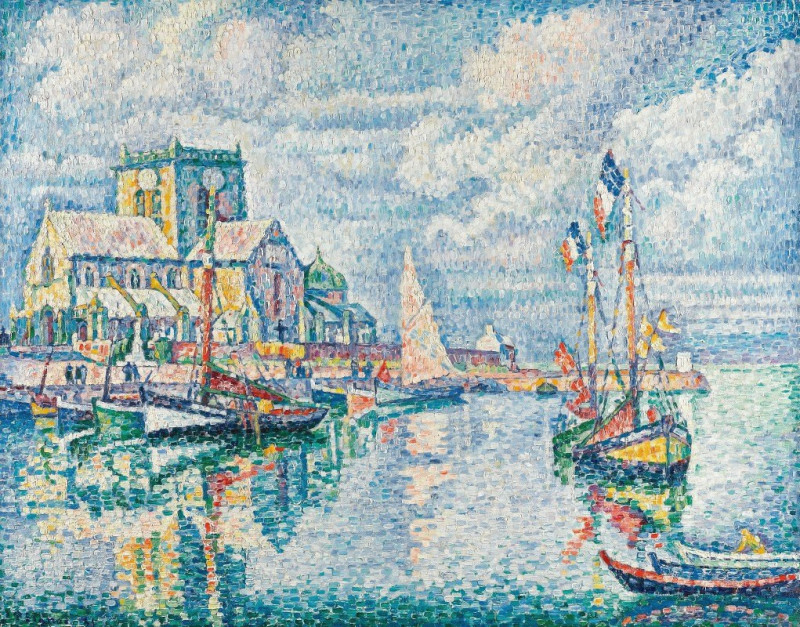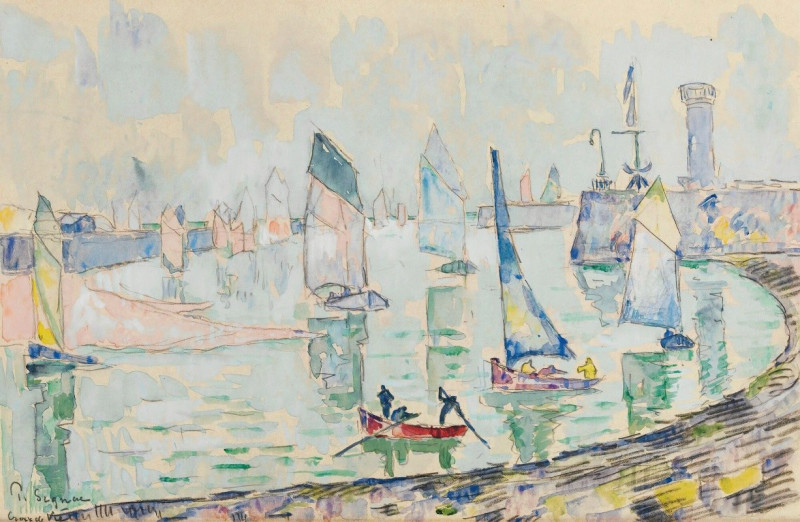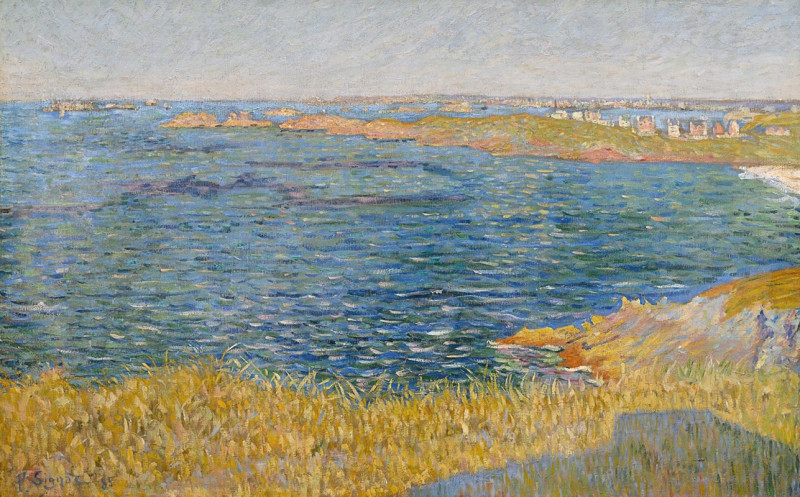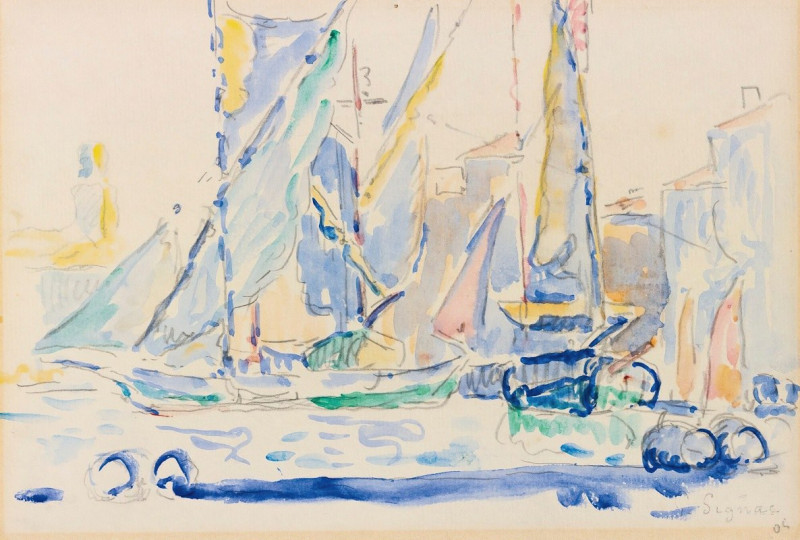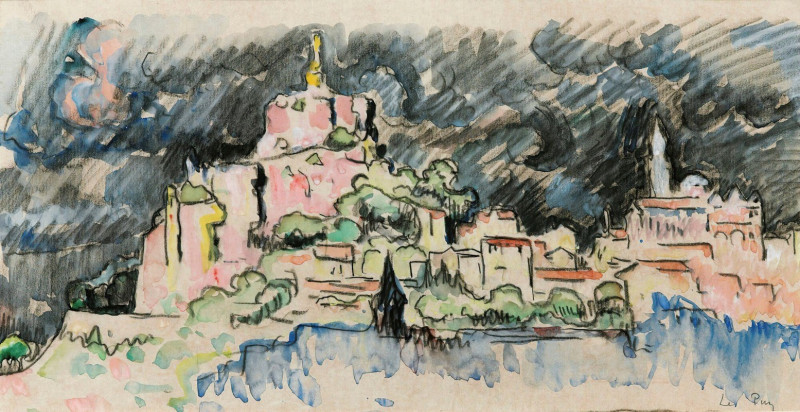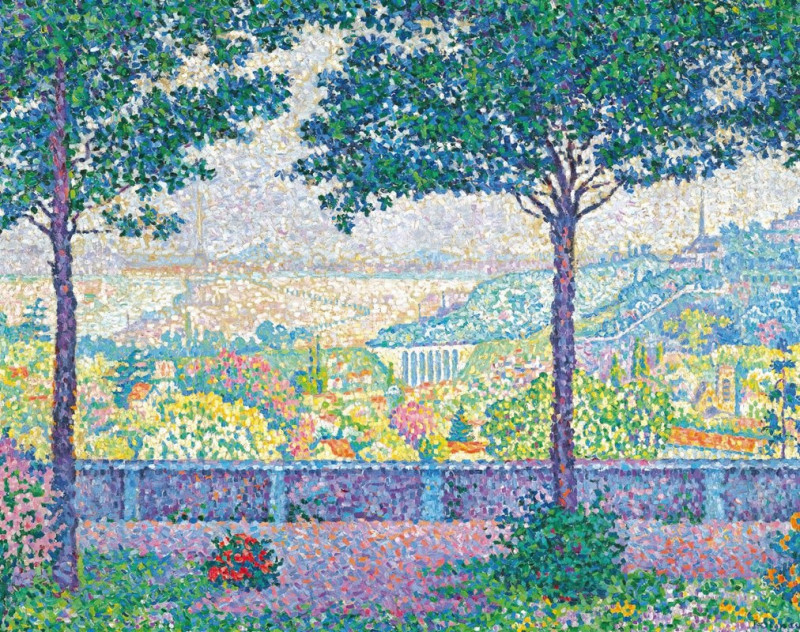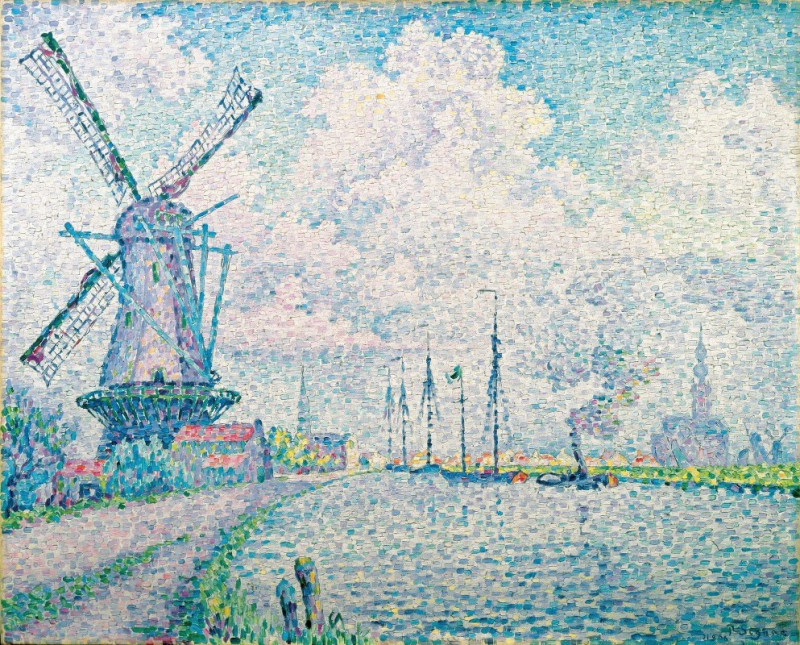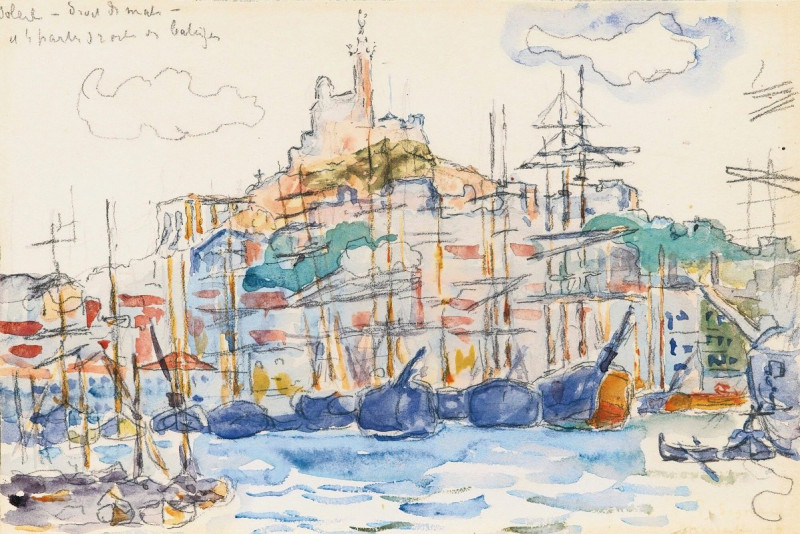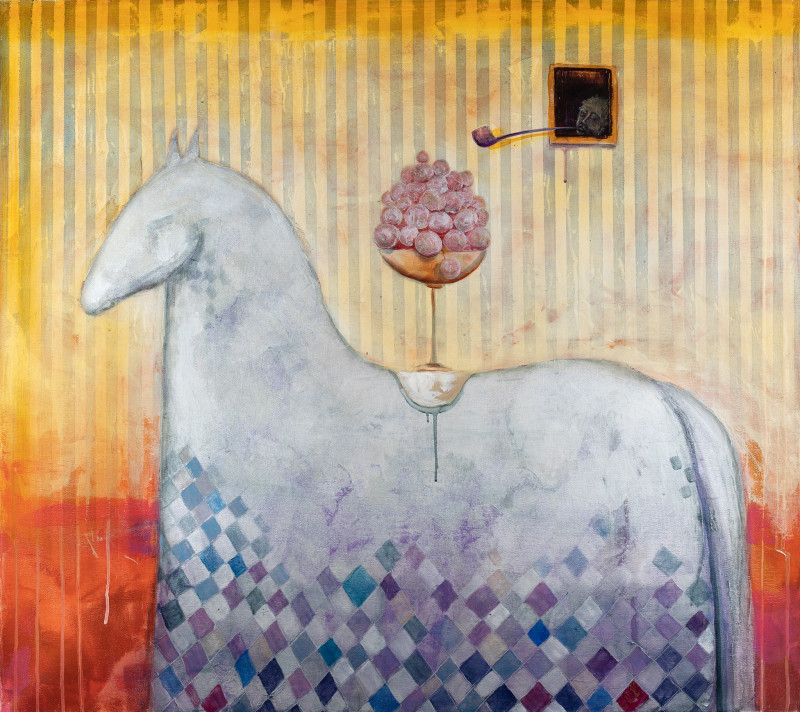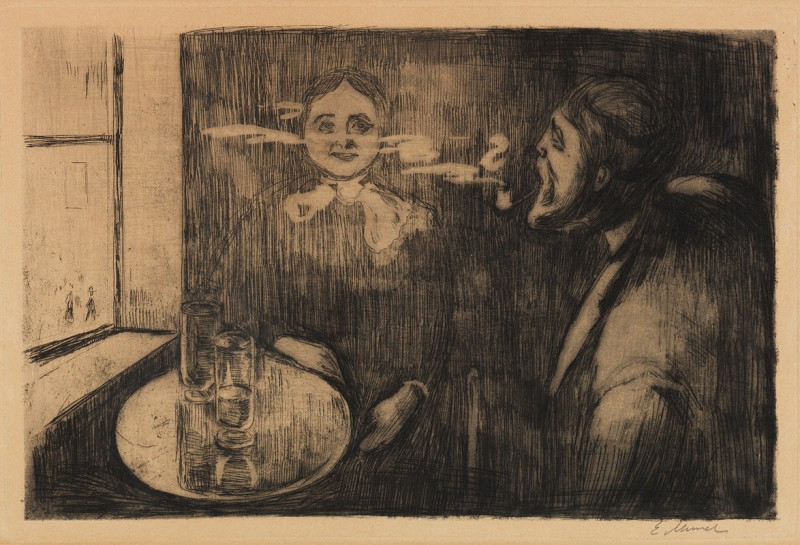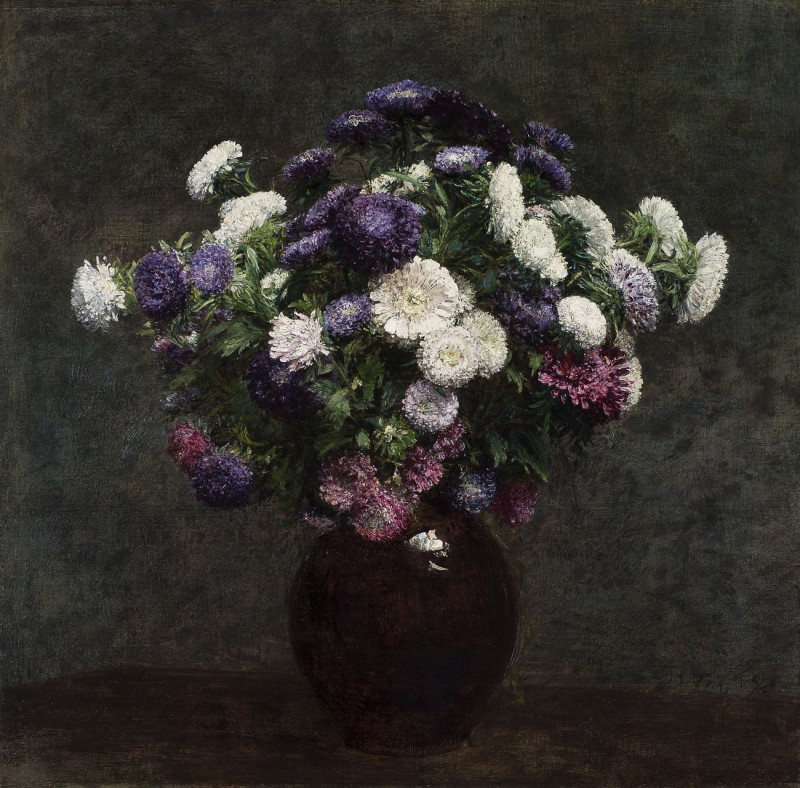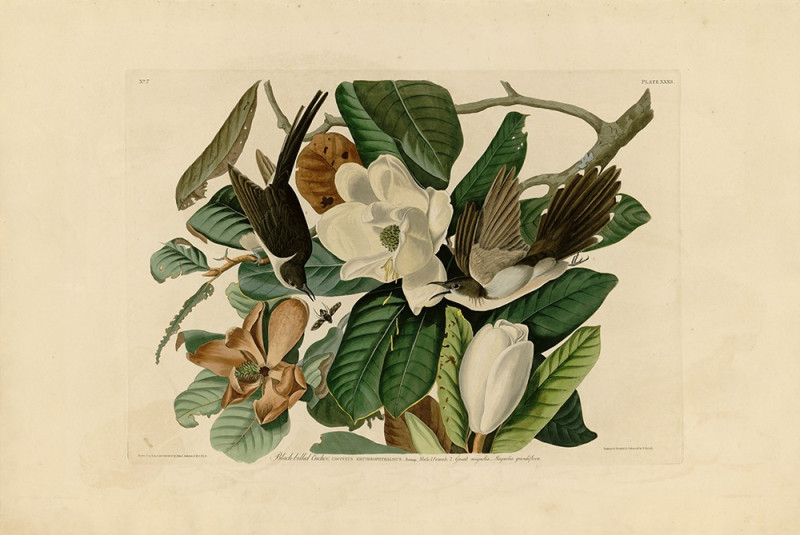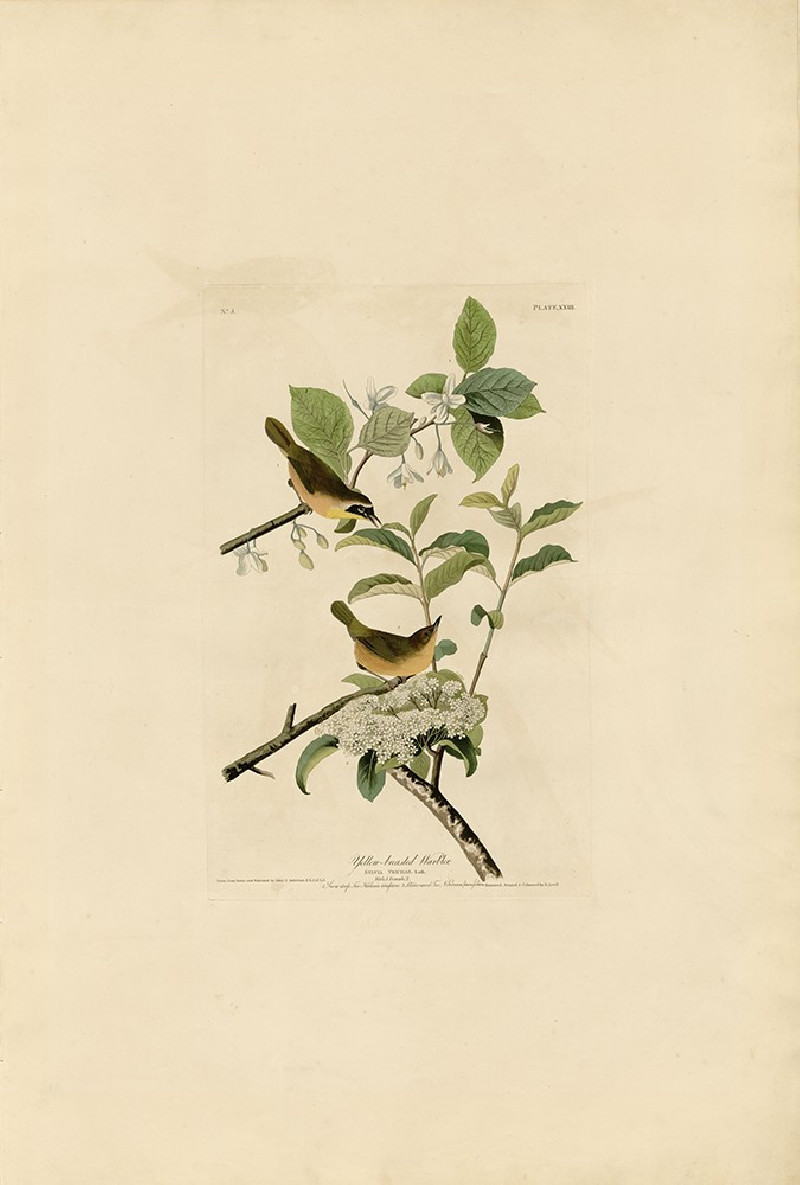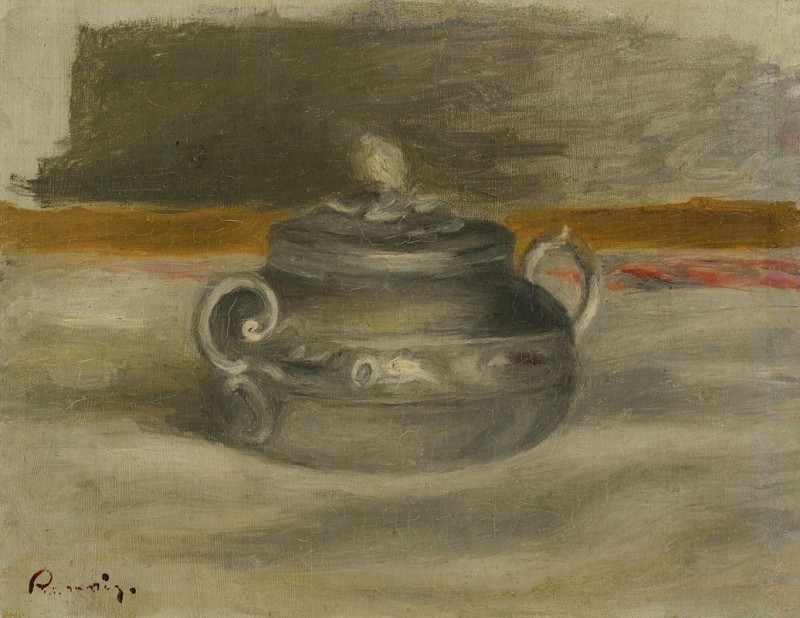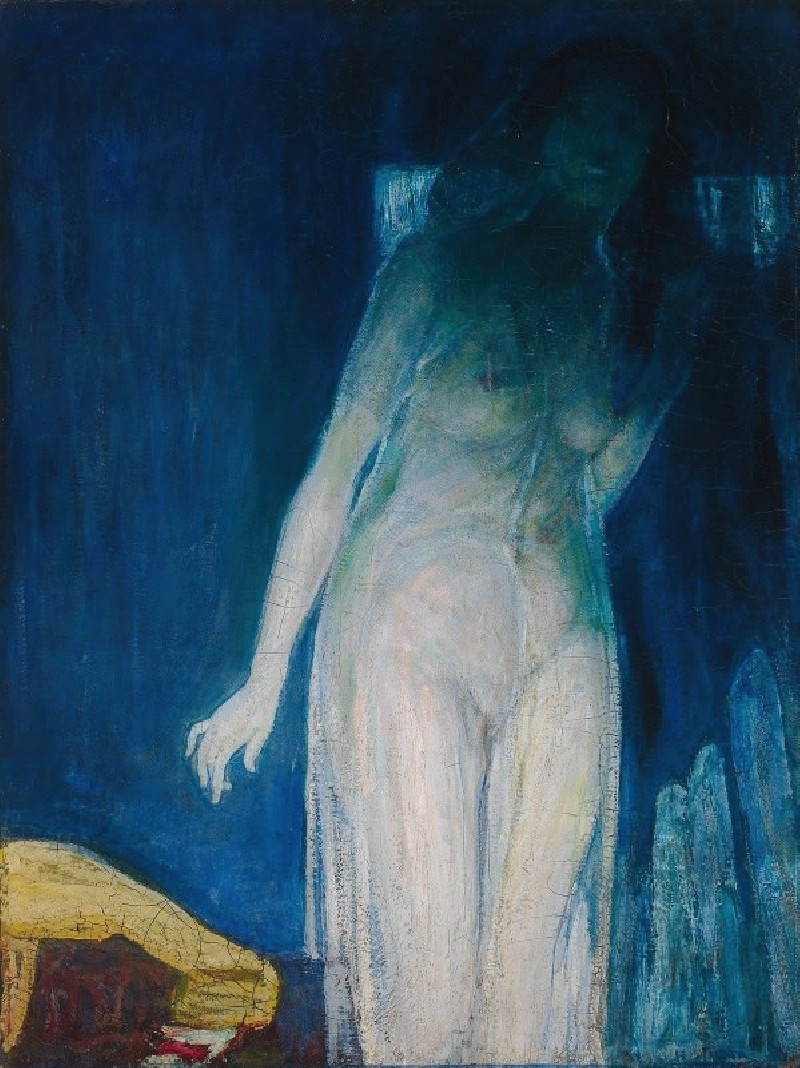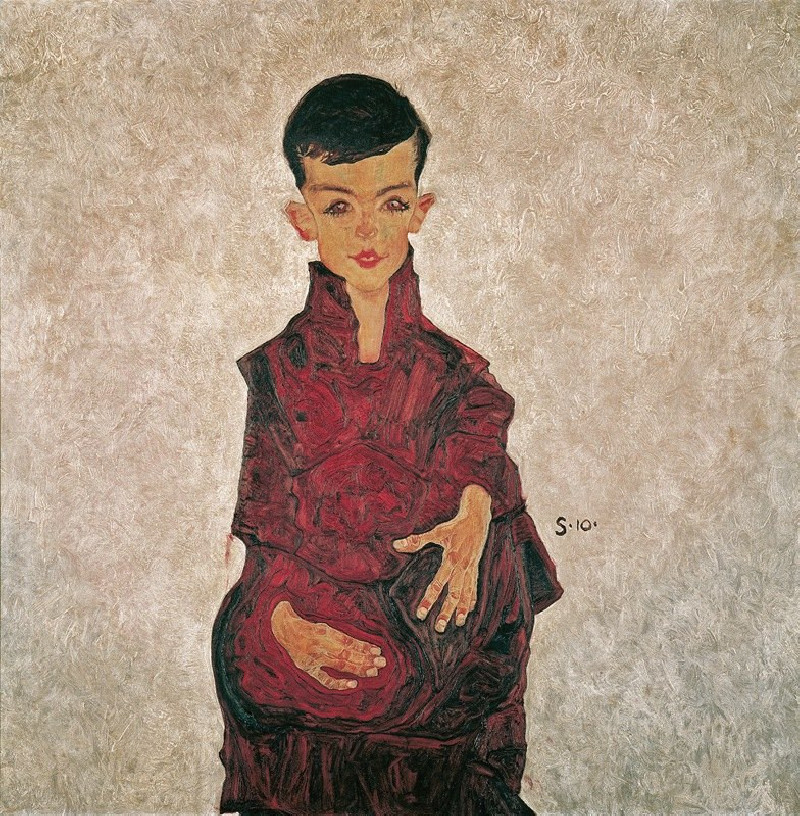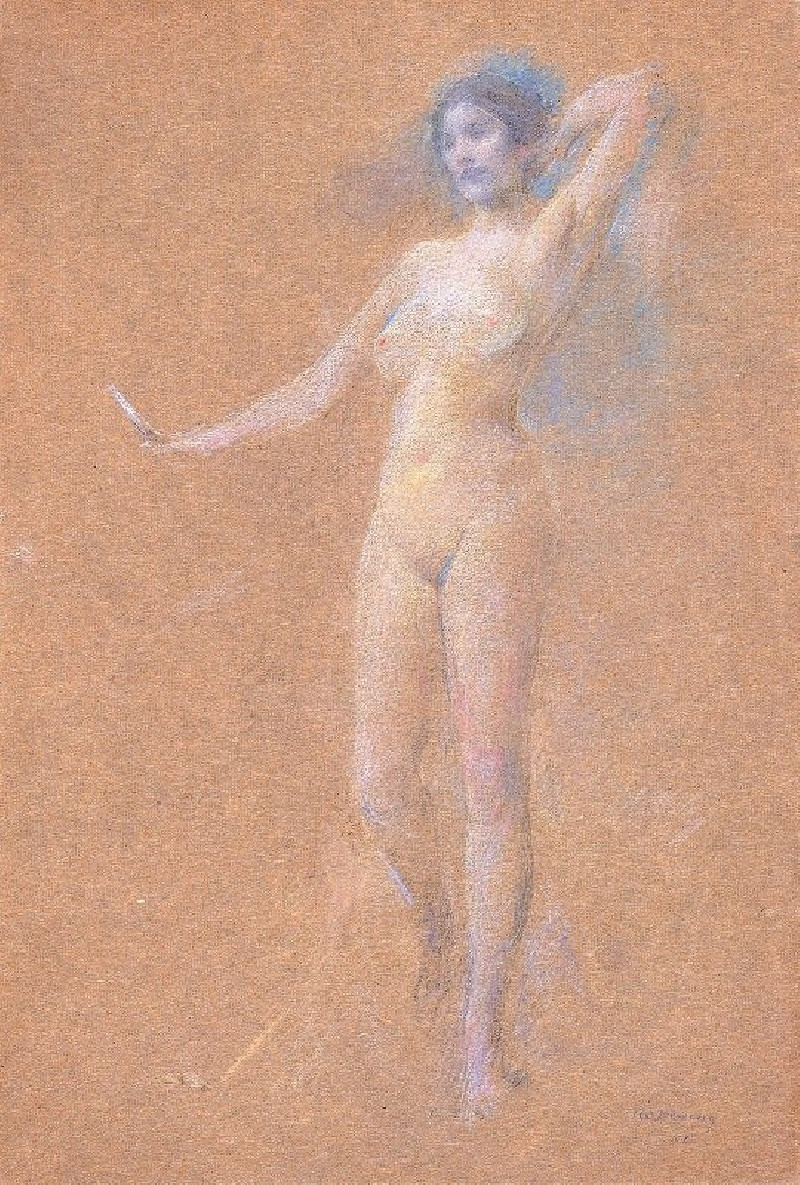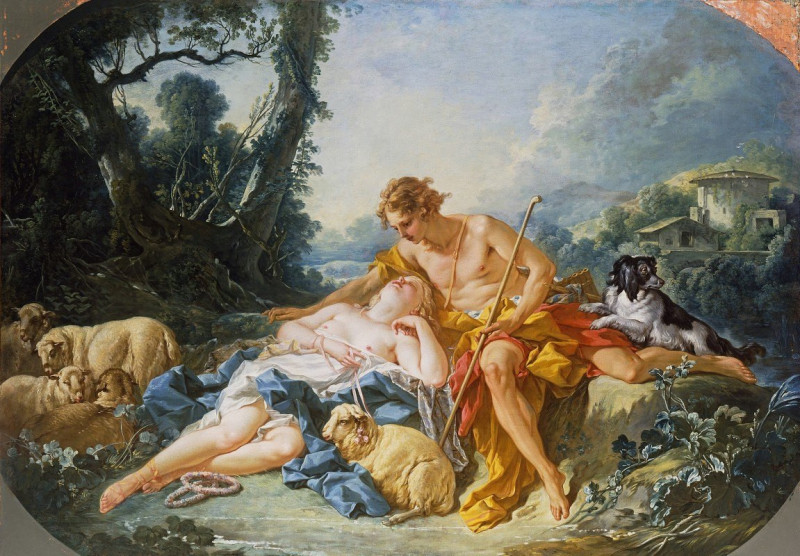La Rochelle
Technique: Giclée quality print
Recommended by our customers
More about this artwork
This painting by Paul Signac, titled "La Rochelle," depicts a bustling harbor scene with a lively and dynamic use of colors and brush strokes. The artwork is rendered in a watercolor technique that conveys a sense of lightness and fluidity. Signac, known for his role in the development of Pointillism alongside Georges Seurat, here employs a looser style that still reflects his interest in color theory and the effects of light.The composition captures La Rochelle’s historic towers, which dominate the skyline, lending a grandeur and historical weight to the scene. These towers, seemingly weathered yet majestic, overlook the harbor filled with boats. Some boats are moored, while others have their sails unfurled, suggesting a readiness to embark or just having arrived. The masts and sails of the boats create vertical lines that contrast with the more organic forms of the clouds and the soft horizontal lines of the water.The palette is infused with soft blues, purples, and pops of warmer tones in oranges and reds, giving the scene vibrancy and movement.
Delivery
Returns
Paul Signac (1863-1935) was a French Neo-Impressionist painter. Together with Georges Seurat, Signac developed the Pointillism style. He was a passionate sailor, bringing back watercolor sketches of ports and nature from his travels, then turning them into large studio canvases with mosaic-like squares of color. He abandoned the short brushstrokes and intuitive dabs of color of the impressionists for a more exact scientific approach to applying dots with the intention to combine and blend not on the canvas, but in the viewer's eye.

